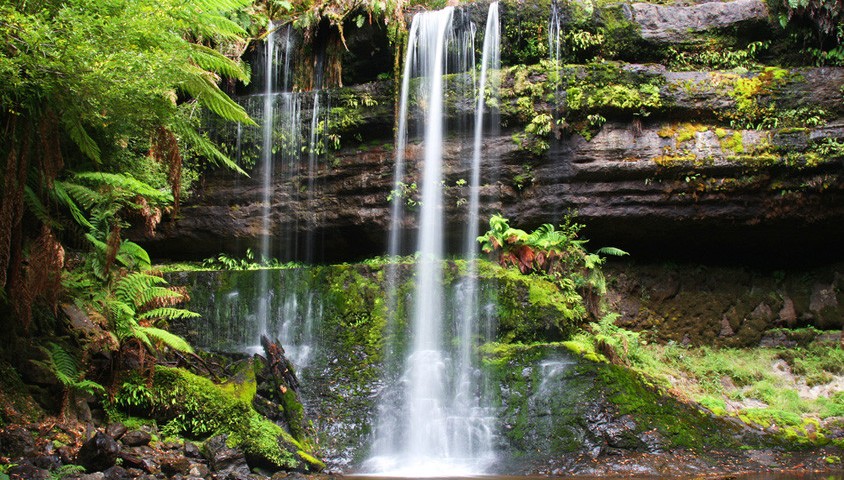In the history of nature conservation in Australia, Tasmania has played a very important role and 2015 is a birthday for some important events in that state.
For example, this November will be the 100th anniversary of the passage of the Scenery Preservation Act that established the Scenery Preservation Board – the nation’s first specialised agency for national parks and reserves. Also, earlier this year, the 60th anniversary of the establishment of Lake Pedder National Park was commemorated in Hobart. This national park had been established in 1955 on the recommendation of the Scenery Preservation Board with the 1954 agreement of the Hydro Electric Commission (HEC) that had a statutory position on the board.
It took only 10 years before plans were revealed for a very much larger impoundment that would drown Lake Pedder under 15 metres of water. What did the HEC say about this? Referring to the huge artificial lake to be created, the head of the HEC said: “As these will cover low lying areas of little scenic interest the overall result should be an improvement of the existing situation”.
What became even clearer over the next six years was not only was Lake Pedder already a well known scenic gem, it also had an outstanding endemic fauna and was a unique landform.
Lake Pedder was drowned, but when the ‘Tasmanian Wilderness National Parks World Heritage Area’ was established in December 1982, Lake Pedder was included in it because of the obvious benefits that would flow from its restoration. Because of its failure to protect Lake Pedder, the Scenery Preservation Board was replaced in 1970 by a National Parks and Wildlife Service.
Move forward to 2015 and a new draft management plan was released for what now bears the name of ‘Tasmanian Wilderness World Heritage Area’.
It proposed the complete removal of the wilderness zone in the World Heritage Area in the current management plan, covering 1,341,366 hectares. In a schedule to the Tasmanian National Parks and Reserves Management Act one of the objectives of national parks is referred to as being “to preserve the natural, primitive and remote character of wilderness areas”.
Data for Australia’s protected area systems is compiled every two years. The table below is part of the 2014 data for Tasmania. Quite simply, if the draft management plan proposal is accepted the figure for category 1B (Wilderness Areas) in the 2016 data will become zero. Currently, land in the wilderness zone covers 1,341,336 hectares – 19.61 per cent of Tasmania. All of it is located within the World Heritage Area.
| Terrestrial Protected Areas by IUCN Category in TasmaniaCAT | Number | Area | % of PA | % of TAS |
| IA | 75 | 122,014 | 4.05 | 1.78 |
| IB | 6 | 1,341,336 | 44.48 | 19.61 |
| II | 38 | 236,916 | 7.86 | 3.46 |
| III | 64 | 29,740 | 0.99 | 0.43 |
| IV | 891 | 302,775 | 10.04 | 4.43 |
| I-IV Total | 1,074 | 2,032,782 | 67.41 | 29.72 |
| NA | 3 | 355 | 0.01 | 0.01 |
| V | 220 | 136,177 | 4.52 | 1.99 |
| VI | 227 | 846,393 | 28.07 | 12.37 |
| V-VI Total | 447 | 982,570 | 32.58 | 14.36 |
| Total | 1,524 | 3,015,707 | 100 | 44.09 |
| Area of Tasmania | 6,840,133 | |||
So the question is, nearly 60 years on, is this another Lake Pedder moment?
One aspect of the situation is that the national park and reserve estate in Tasmania has grown over the last half century from 285,303 hectares in 1965 to 3,015,707 hectares in 2014, a nearly 10 times increase. It is a similar situation in the rest of Australia, although because the World Heritage Area in Tasmania covers 40 per cent of the State the Tasmanian figures are considerably larger. Australia’s protected area system covers 139,501,551 hectares or 18 per cent of the nation. With the demands of an ever growing population and increasing international trade the question that must be faced up to is whether the two aims of nature conservation and resource development are on a collision course.
If the answer is in the affirmative, then this is indeed a ‘Lake Pedder moment’ – a critical point in time. When the next threat following the Lake Pedder calamity arrived in 1983, the lessons had been thoroughly learned and the Franklin was saved.
If we value all the different ways in which these protected areas contribute to the health of people and to environmental resilience then the time has surely come to step the fight and once more the main battlefield is in Tasmania, this time defending its magnificent wilderness areas.


